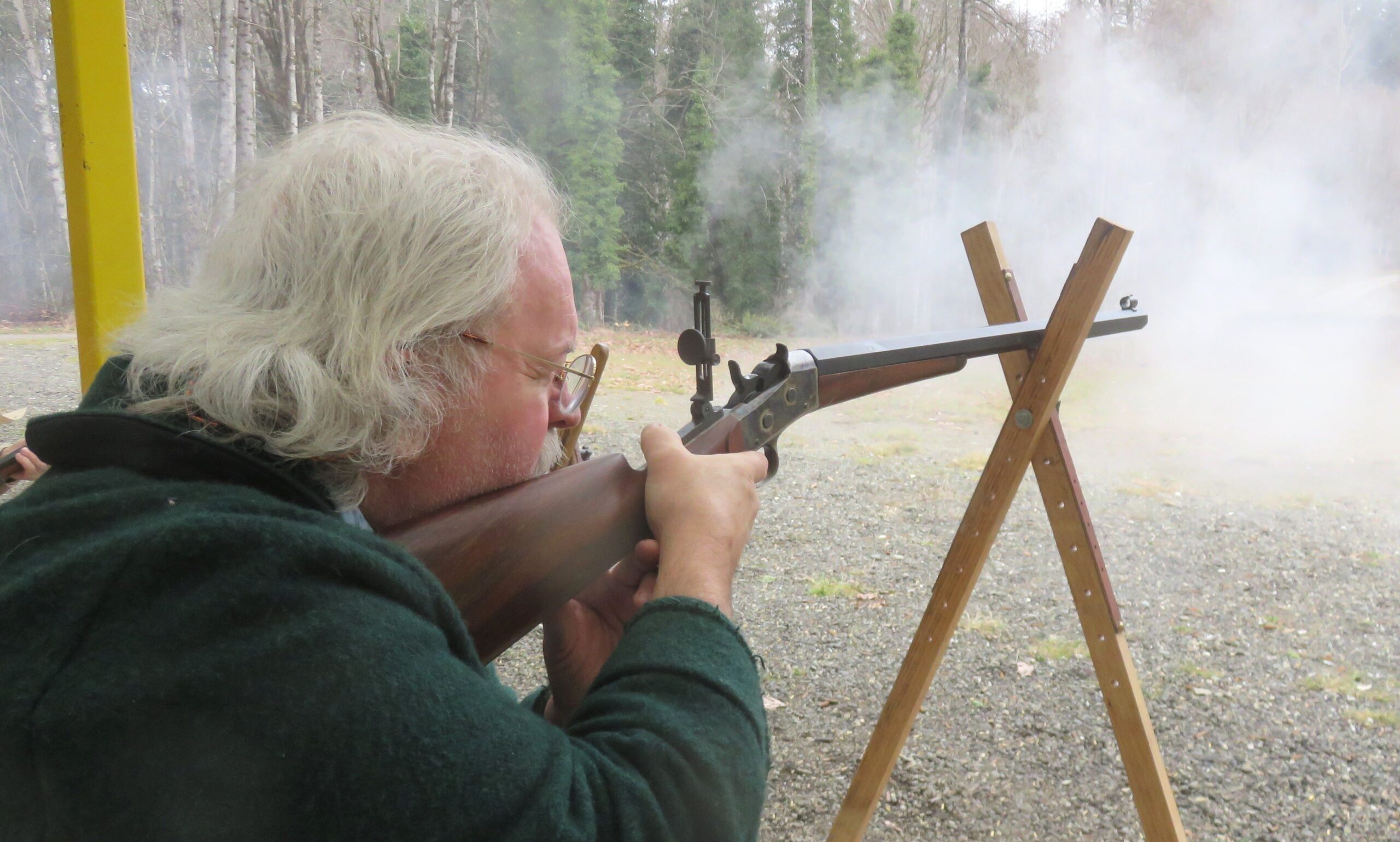
By Mike Nesbitt | Contributing Editor
Any difference can make a difference. I’ve said that before in regard to black powder cartridge reloading, but now I’ll say it again with even greater emphasis.
I had a very recent experience which I’ll tell you all about, in detail. Yes, I already knew that any difference can make a difference but the extent of that difference certainly surprised me.
Enough of that double-talk, here’s some real data. The rifle I was using was my good old Highwall by C. Sharps Arms in .40-70 Sharps Straight caliber with a single-set trigger. Previously the load I had used featured a 370-grain bullet, cast from Accurate Molds’ #41-370D, a good-looking and good performing bullet with a rather wide flat nose, which punches very clean holes through the target paper. The powder used in that previous load was 60 grains of Olde Eynsford 1 1/2F and ignition was provided with large pistol primers. Those loads were contained in Hornady’s .405 Winchester cases, shortened to 2 1/2 inches for the .40-70 SS.
To add just a bit more information, the .40-70 SS is a straight-walled case, and my loads were made without resizing the brass. The empties all came out of one rifle, and they were reloaded to be used only in that same rifle. Powder in those loads was compressed under a card wad and the sized and lubricated bullets were “seated” just with fingertips. Then, in order to tighten the necks of the cases to keep the bullets from falling out, the loaded rounds were run just a little way into a file trim die for the .40-70 which ‘snugged’ the bullets into the case quite nicely.
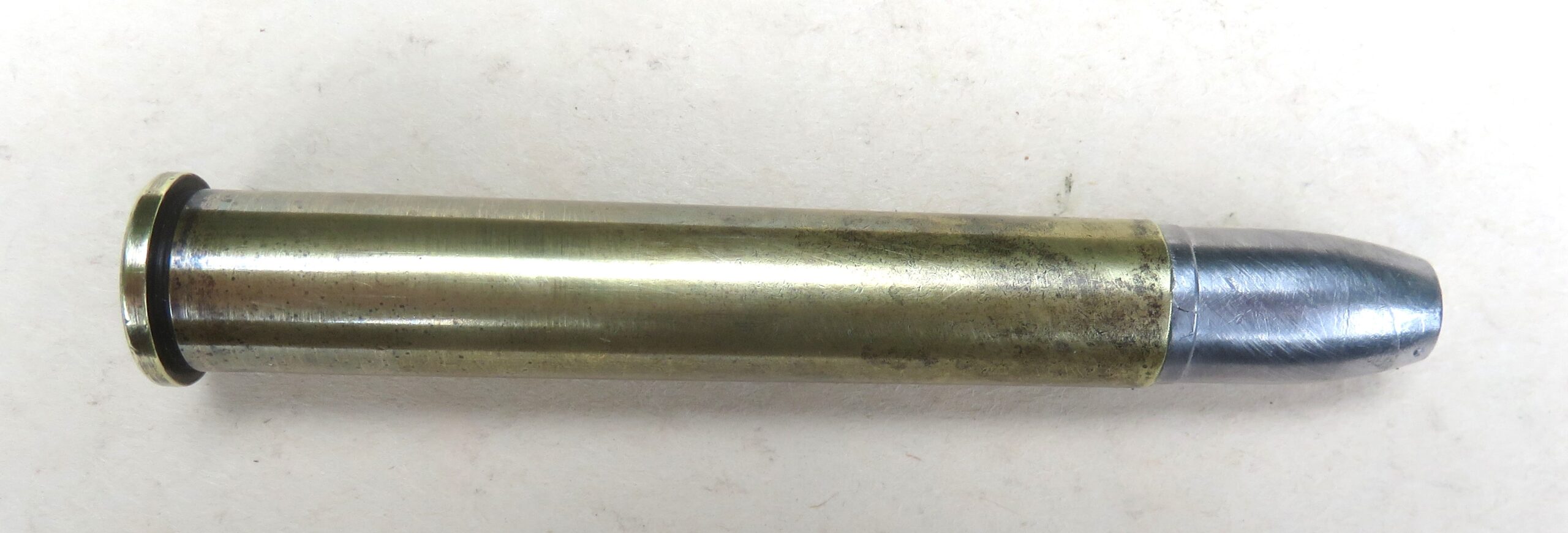
That’s the load I used for quite a while in the Highwall and that was used as my standard load for silhouette competition. While I’m not a record holder at silhouettes, by any means, I did do some fair shooting with the combination. In fact, my one and only 10-pin, for knocking down ten consecutive pigs at 300 meters with ten consecutive shots, was earned with that rifle and the loading just described.
For sights, the Highwall has an RHO 6X full-length scope (no longer in production) mounted on it. At first the rifle was equipped with a mid-range deluxe tang sight, by C. Sharps Arms, along with a Globe front sight with changeable apertures.
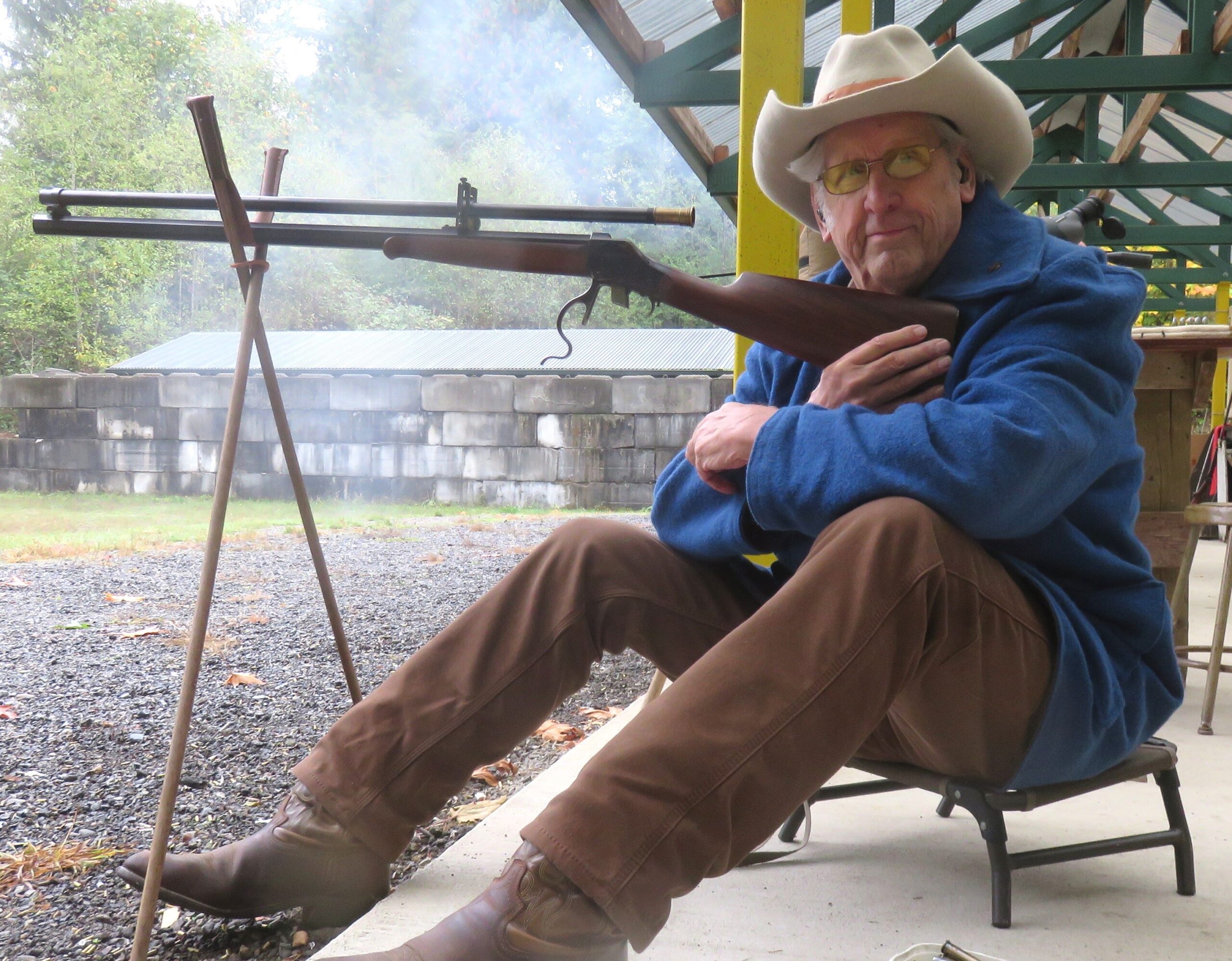
Why the Scope
My reason for going to the scope, which was done more than a few years ago, was failing eyesight in my right eye, my aiming eye. And the scope did help, not necessarily in my scores or getting a greater number of hits, but it allowed me to see the targets much better, and that must have contributed to my scores.
The .40-70 Highwall was used, and faithfully so, until I got a new Sharps in .45-90, a heavy Bridgeport Model also from C. Sharps Arms. The .45-90 was also scope mounted, with a full-length scope, again of 6X, but by Montana Vintage Arms, better known as MVA (montanavintagearms.com), very much in production. My intention, at least at that time, was to use the bigger .45-90 at the Matthew Quigley Buffalo Rifle Match in Montana and using it for silhouettes, at the Upper Nisqually Sportsmen’s Club near Eatonville, Washington is the best place for me to get some good practice while shooting at distant targets. I got the .45-90 three years ago and still have not used it at Quigley but that’s a different story… The .40-70 was replaced and retired from ‘active duty’ while the .45-90 was ‘fired for effect’ in knocking down silhouettes.
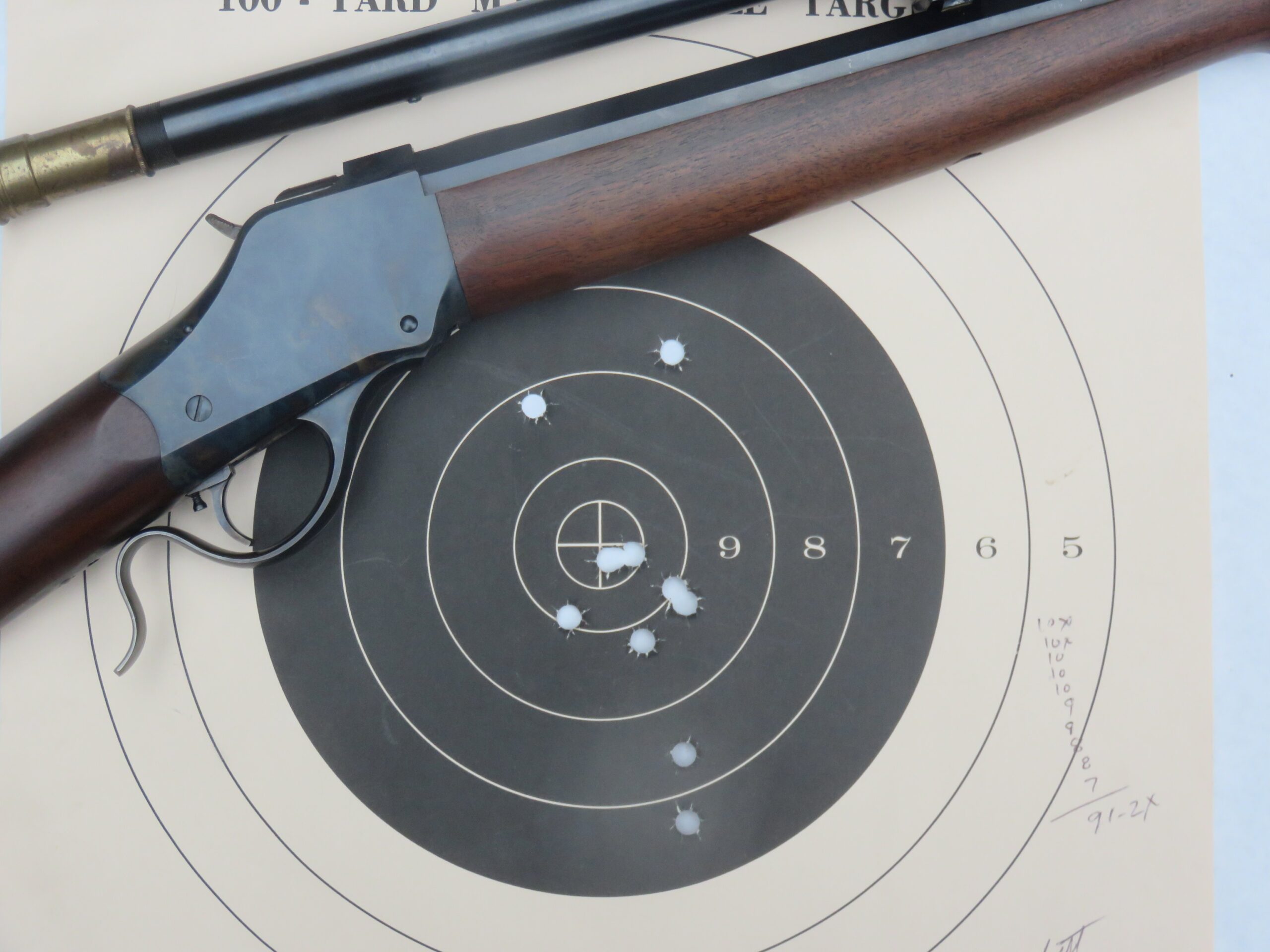
What brought that .40-70 back out of retirement was my eye, while the doctors tell me it is not getting worse, to me it seems to be failing more. There are things I simply can’t see now, or certainly can’t see as well as I used to. This made echoes of words an eye doctor told me more than a few years ago. He said, “Shoot lefthanded, you’ll do a lot better.” That, of course, would mean aiming with my left eye, my better eye. And while my left eye was ready for the task, the rest of my body wasn’t. The coordination needed for shooting left-handed, doing everything backwards as far as rifle shooting goes, was more than I expected and I simply wanted to keep on shooting right-handed. Finally, I gave in and began shooting my rifles from the left shoulder.
And my left shoulder really complained! I didn’t like recoil on my left shoulder. Part of the reason for that was simply in my coordination, I wasn’t holding the rifles properly. But even with the recognition of that, when I’d hold the rifle snuggly into the shoulder, recoil from the heavy black powder cartridge rifles, especially Hefty Hannah, my heavy .44-77, was just too much for me to bear.

So, real re-training efforts were made. Some shooting was done with a rolling block in .38-55 and that was a very sweet handling rifle. No problem with that. The good foundation for shooting left-handed made by the .38-55 was built upon by moving up to the .40-70 Highwall and that proved to be good too. And to keep my shooting with the .40-70 on the good side, from the left shoulder, some tweaking of the loads was involved. This is where the difference showed up, with alarming differences.
Let’s Talk Loads
My previous good loading which used 60 grains of Olde Eynsford 1 ½ F powder was changed to 60 grains of Swiss 1Fg powder, simply going to the larger granulation for a slower burning powder charge. The idea behind this change was to have the bullets accelerating in the barrel at a slightly slower rate which should reduce the recoil while also, perhaps, maintaining or even increasing the consistency of the load. A batch of the loads using the Swiss 1Fg powder was assembled but using a lighter 330-grain paper patched bullet and the rifle was taken to the range for shooting, with a target posted at 100 yards.
Recoil was not a problem and that made shooting the .40-70 very likeable again. But the paper patched bullets did not satisfy me accuracy wise. So, the 370-grain grease groove bullets were brought back into play. Those, over the same 60-grain loading of the Swiss 1Fg powder, gave me the accuracy wanted and my 100-yard group was doing very well, with only some windage adjustments needed to put generally in the center of the target.
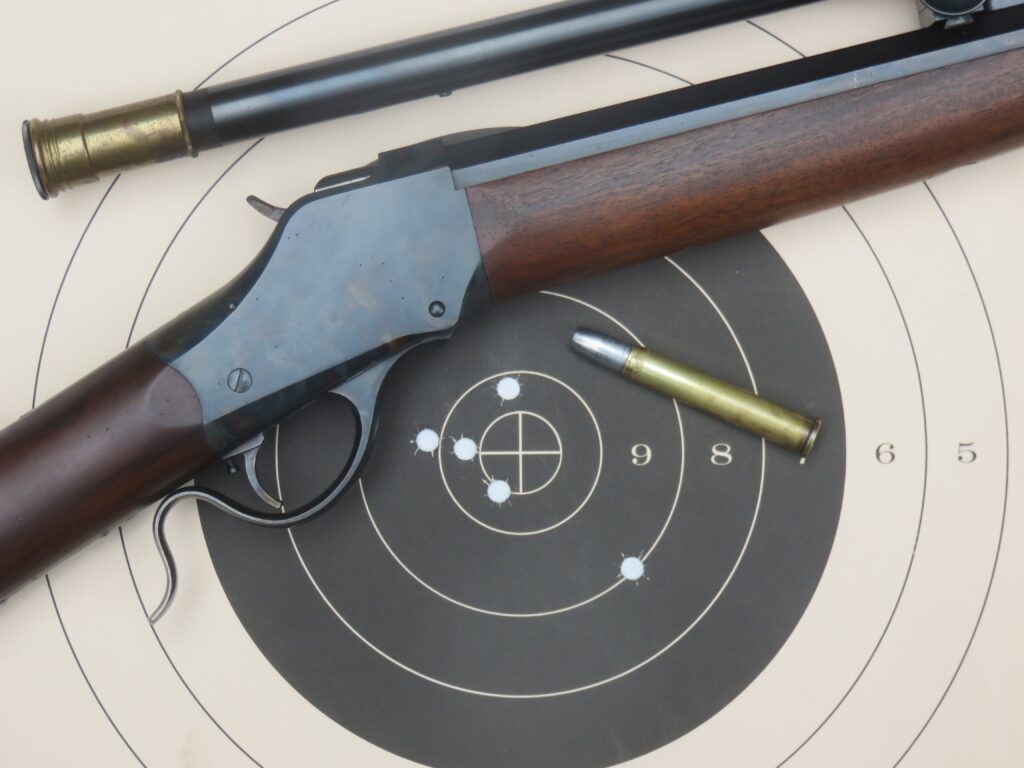
The next of our Old West Centerfires matches, held at the Capitol City Rifle & Pistol Club near Olympia, Washington was less than a week away and that made me act just a bit hastily in getting prepared. The .40-70 SS with the new loads was tried only at 100 yards even though the match included targets at both 100 and 200 yards. My sight settings with the new loads at 100 yards hadn’t changed when I switched to the Swiss 1Fg powder, so I assumed that my sight setting for 200 yards hadn’t changed either.
At the match, I fired my 100-yard target first, shooting from the sitting position while the rifle was cradled in cross-sticks. My spotter was Jerry Mayo and he kept giving me good reports on where my shots were going. All seemed to be going very well and the only spread to my group was when I adjusted my hold just a bit, which gave me a couple of low and then a couple of high shots. The remaining six shots all went into the 10 or 9 rings which gave me a score on that first target of 91-X. That certainly pleased me, especially for my first time at shooting in one of the Old West Centerfires matches left-handed. And I found out at the end of the match that my score was the highest scoring 100-yard target for the day.
Then I took a break from shooting to spot for Jerry while he shot his 100-yard target. During that time, I also wiped the .40-70’s bore with just one patch, moistened with a mixture of Windex with vinegar diluted with water, which is a dandy black powder solvent. Jerry did rather well on his 100-yard target, using his trademark Remington rolling block in .50-70 caliber, then it was time for me to shoot my 200-yard target.
This is where the difference between the two powder charges really showed up. While I had a very good and steady hold, with just as good of a sight picture, my shot was a miss! Jerry was watching, like a good spotter should, but did not see where the bullet had hit. Our targets at 200 yards are rather large, 28 X 28 inches with a 12-inch diameter bullseye, and to miss the paper completely was not expected at all. A second shot was fired which was also a miss. That bullet had gone low, below the target, but Jerry saw something impact higher up the berm, perhaps a rock that was knocked up the hill by the bullet, and thought my shot had hit up there, going high. To keep this from getting too long, let me say that I finished my 200-yard target with only four scoring hits.
The new loads with the Swiss powder certainly needed a new sight setting for the 200-yard distance. Now that is done, and I’ll easily be better prepared for the next OWC match which will be held in November. How the change in powder made such a difference at 200 yards but not at 100 yards was a real surprise. Yes, any difference can make a difference and, in this case, such a difference!



